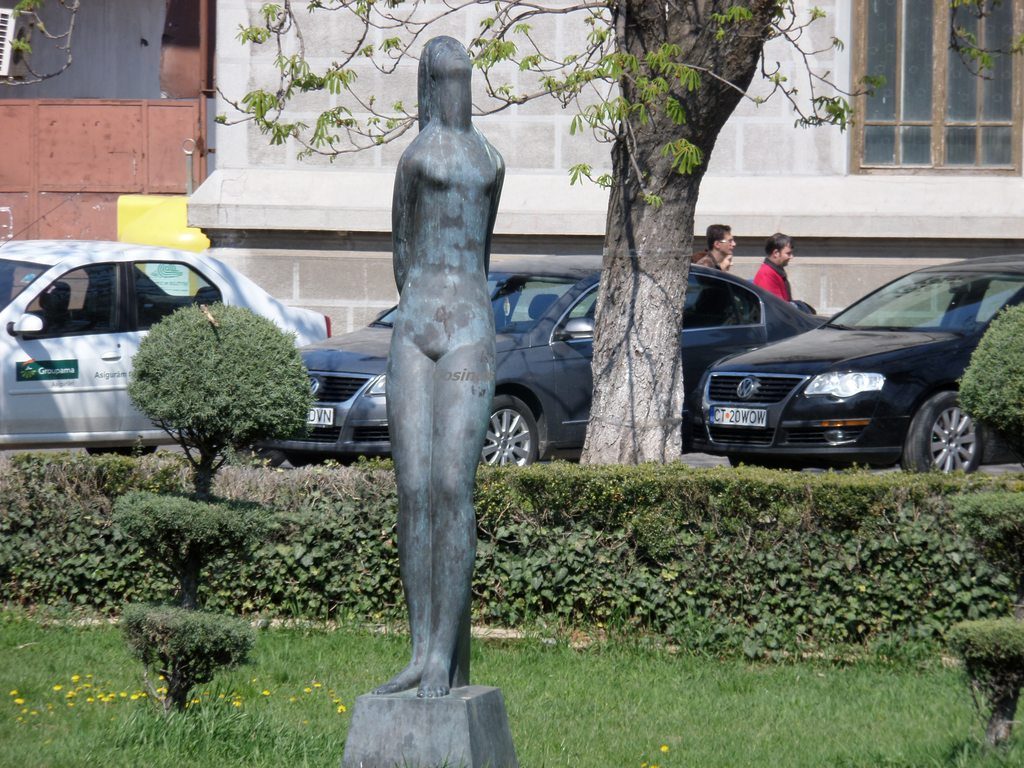

The Bliss Statue is one of the historical monuments of the county Constanța. It was executed in the year 1962 by the sculptor Constantin Baraschi.
The “Bliss” statue, situated in the museum, was executed of marble, and a version mould in bronze is situated in the Mamaia resort.
Constantin Baraschi (born on the 17th of November 1902, Câmpulung – deceased on the 22nd of March 1966, Bucharest) was a Romanian sculptor, correspondent member of the Romanian academy (1955).
In 1921, he registered at the School of Beaux – Arts from Bucharest, at the class of sculpture of Dimitrie Paciurea. He left this school, in 1925, in order to attend the courses of the Free Academy of Plastic Arts. His public debut was at the Official Saloon of 1925. In 1926, Baraschi was awarded at the same official manifestation, and in 1927 received a study scholarship in France. Like his friend, Mac Constantinescu, the sculptor, he studies at the Julian Academy around Marcel Brouchard, then he also aims for the free courses of the Academy “Le Grande Chaumiere”, entering in the school – workshop of Bordelle. After his expositional debut which is consummated in Bucharest in 1928, Baraschi’s career will enter on a continuous ascending path, becoming one of the most expressive masters of the sculpture art, outlined by a correct reproduction of the human anatomy.
About Constantin Baraschi there was known even a few months before the Coup d’Etat of the 23rd of August 1944, when he would have started to mould the Monument of the freeing soviet military man, which was then unveiled in the Victory Market in the year 1946, in the presence of King Michael of Romania.
Among his reference creations there are numbered two alto-relief for the Triumphal Arch, the statue “Nicolae Bălcescu”, unveiled in 1969 at Pitești and two bas-relief for the façade of the Institute of botanic from the capital. He contributed at details from the iconostasis of the Church Cașin, he is the author of the busts of Nicolae Bălcescu, Alexandru Sahia and George Coșbuc from the park Carol I.
At Câmpulung, in the Public Garden, there are found his sculptures ”N. Bălcescu” and ”Self – portrait”. Also in the locality there are “Țăranca din Muscel” and the statuary groups from the Cemetery Flămânda and from the entrance in the stadium.
In the County Art Museum Prahova ”Ion Ionescu – Quintus” – Ploiești, Constantin Baraschi is present, among others, with two projects of unusual equestrian monuments of the Kings Carol I and Ferdinand.
He is the only Romanian sculpture who wrote a sculpture treaty (“Treaty sculpture”, 2 volumes, the Publishing House Meridiane 1962, the IInd Edition in 1964).
Constantin Barashi was also a rector at the Institute of Plastic Arts from Bucharest.
